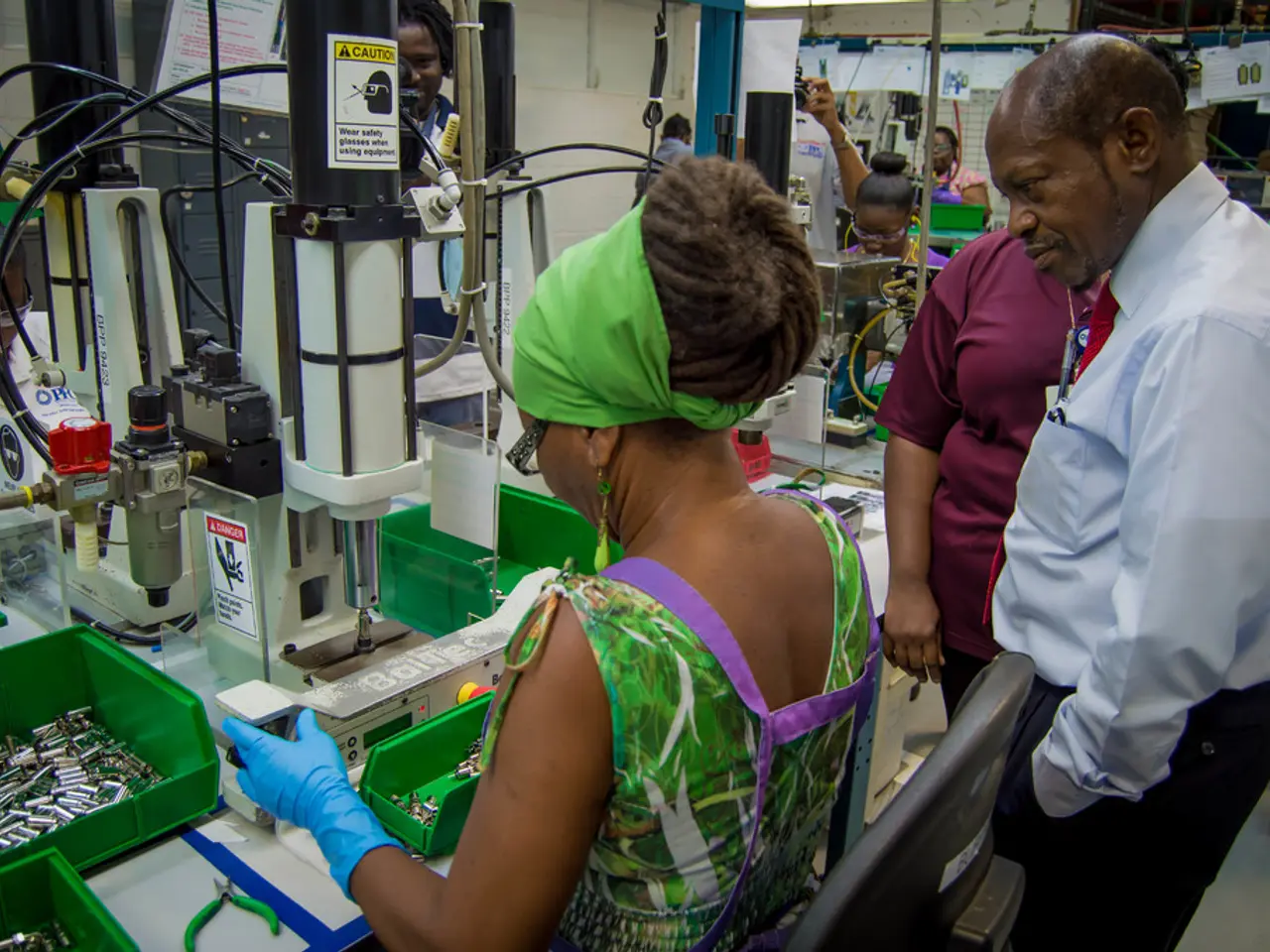Transforming Laboratories Digitally: Reaping advantages of paperless labs through LIMS implementations
**Navigating the Transition to Paperless Labs: A Strategic Approach**
In the modern world, laboratories are embracing digital transformation to stay competitive and streamline operations. One key aspect of this evolution is the adoption of Laboratory Information Management Systems (LIMS) for paperless labs. However, implementing such a system comes with its own set of challenges that require a strategic, well-planned approach.
**Key Challenges in LIMS Implementation**
The complexity in setup and configuration of LIMS systems can be a stumbling block, especially for users unfamiliar with the software or cloud-based environments. High upfront costs, complex pricing models, or pricing that escalates after data migration can strain budgets. Integration with existing systems, particularly instruments and legacy systems, is critical for smooth workflows, and failure to achieve this can lead to inefficiencies or duplicated efforts.
Data migration and management pose another challenge. Transferring legacy data accurately and establishing consistent metadata standards is essential to avoid costly errors and delays. User adoption and training can be a significant hurdle as well, with resistance from staff accustomed to paper processes or older systems potentially impairing adoption. Lastly, regulatory compliance and validation are crucial considerations, as LIMS must meet regulatory requirements and be properly validated to ensure data integrity and audit readiness.
**Strategies to Maximize Benefits and Value**
To overcome these challenges, companies should adopt a strategic, well-planned approach that addresses both technical and organizational aspects.
1. **Vendor and System Selection:** Choose LIMS vendors with a strong reputation, proven experience, and robust support. Evaluate product configurability, scalability, integration capabilities, and alignment with your lab’s specific workflows and future needs.
2. **Comprehensive Planning:** Develop an early and detailed implementation plan, including resource allocation, timelines, and risk management. Plan data migration carefully, standardizing formats and metadata to ensure smooth data transfer and minimize downstream errors during processes like tech transfer.
3. **User-Centric Training and Change Management:** Invest in training programs tailored to different user groups to minimize resistance. Foster a culture that embraces digital transformation, highlighting efficiency and compliance benefits.
4. **Phased Implementation and Validation:** Roll out the system in phases to allow iterative testing and feedback, enabling corrections before full deployment. Ensure thorough system validation per regulatory standards to maintain data integrity and compliance.
5. **Continuous Improvement and Updates:** Regularly update the LIMS software to incorporate new features, security patches, and compliance requirements. Establish mechanisms for ongoing user feedback and system tuning to adapt to evolving lab needs.
6. **Leverage Digital Transformation for Operational Excellence:** Adopt unified digital platforms that integrate document management, quality, and regulatory processes to streamline workflows and boost productivity. Utilize LIMS capabilities to enable real-time data access and collaboration among lab staff to improve teamwork and reduce duplicate work. Outsource LIMS management to trusted partners to focus internal resources on scientific and regulatory priorities while ensuring robust system operation and compliance.
By addressing technical, financial, and human factors comprehensively, companies can overcome common LIMS implementation challenges and unlock benefits such as enhanced data quality, regulatory compliance, operational efficiency, and scalability in their transition to paperless labs.
A comprehensive assessment of the organization's strategy and needs is a best practice for mitigating challenges in transitioning to paperless labs. Developing a detailed project roadmap ensures that objectives are clearly defined, resources are allocated efficiently, and phased implementation steps are designed. With a strategic approach, organizations can align their paperless lab initiatives with long-term operational goals, minimizing administrative overhead and supporting corporate sustainability initiatives. This strategic approach ensures a smoother transition and maximizes the value of the investment in paperless labs.
In this strategic transition to paperless labs, organizations in various sectors such as life sciences, retail, and consumer products can leverage ERP systems like SAP to drive digital transformation and improve operations. Consulting services in digital transformation, data-and-cloud-computing technology, and business strategy can help streamline the implementation.
- Leverage consulting expertise for guidance on vendor and system selection that aligns the LIMS with the organization's specific needs, ensuring compatibility with existing systems like financial management, CRM, and supply chain solutions.
- integration with existing systems is crucial for seamless workflows. Consulting partners can assist in accomplishing this by ensuring the LIMS integrates with critical financial systems, helping to manage costs and optimize cash flows.
- Sustainability considerations are essential when adopting a paperless lab, particularly in the context of science, medical-conditions, and regulatory compliance. Consulting partners can help organizations assess their environmental impact and devise strategies to reduce their carbon footprint during the LIMS implementation process.
- In the medical-conditions research field, the adoption of LIMS and digital transformation can lead to breakthroughs in technology and data-driven innovations. Collaborating with organizations specializing in life sciences and retail can serve as valuable resources for overcoming implementation challenges and fostering cutting-edge advancements in various industries.




